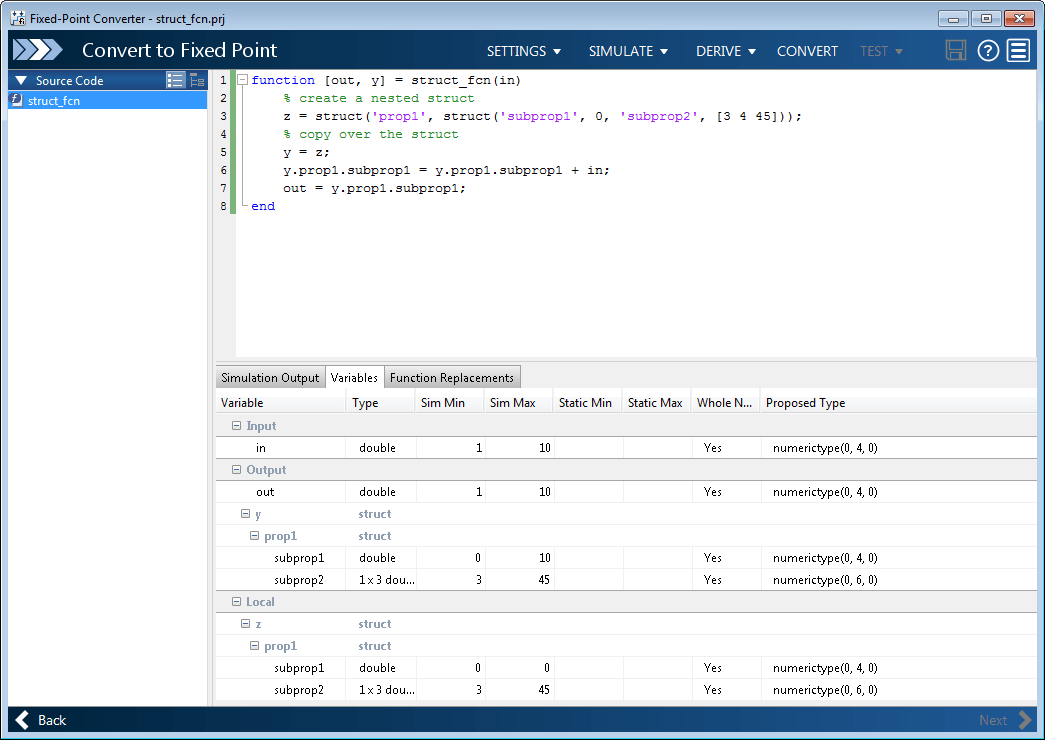Convert Code Containing Structures to Fixed Point
This example shows how to convert a MATLAB® algorithm containing structures to fixed point using the Fixed-Point Converter app.
In a local writable folder, create the functions
struct_fcn.mfunction [out, y] = struct_fcn(in) % create a nested struct z = struct('prop1', struct('subprop1', 0, 'subprop2', [3 4 45])); % copy over the struct y = z; y.prop1.subprop1 = y.prop1.subprop1 + in; out = y.prop1.subprop1; end
In the same folder, create a test file,
struct_fcn_tb.m, that calls the function.for ii = 1:10 struct_fcn(ii); end
From the apps gallery, open the Fixed-Point Converter app.
On the Select Source Files page, browse to the
struct_fcn.mfile, and click Open.Click Next. On the Define Input Types page, enter the test file that exercises the
struct_fcnfunction. Browse to select thestruct_fcn_tb.mfile. Click Autodefine Input Types.Click Next. The app generates an instrumented MEX function for your entry-point MATLAB function. On the Convert to Fixed-Point page, click Simulate to simulate the function, gather range information, and propose data types.
When the names, number, and types of fields of two or more structures match, the Fixed-Point Converter app proposes a unified type. In this example, the range of
z.prop1.subprop1is[0,0], while the range ofy.prop1.subprop1is[0,10]. The app proposes a data type ofnumerictype(0,4,0)for bothz.prop1.subprop1andy.prop1.subprop1based on the union of the ranges of the two fields.
Click Convert.
The Fixed-Point Converter converts the function containing the structures to fixed point and generates the
struct_fcn_fixpt.mfile.